Festivals Inscribed in the Cosmos
Easter, St. John’s Festival, Michaelmas and Christmas are the four holidays closely corresponding to the change of seasons we experience at the equinoxes and solstices.
Superficially, we observe a transition in the amount of daylight and darkness as the Sun crosses the equator on the equinoxes and reaches its maximum excursion on the solstices. But there is certainly more happening in nature than meets the eye.
Rudolf Steiner, the founder of Anthroposophy, shared valuable insights into the effects of the cosmos on matter in his lectures. Steiner emphasized that this influence of the spiritual world on physical phenomena has to be recognized. He tells us we will only have a true natural science when we go beyond these earthly things.
Modern astrology attempts to fill the void with regard to the planetary influence on emotions, but what about the effect of the cosmos on matter?
The Effect of Spirit on Matter
”Whilst the substances are in the solid state they are subject to the earthly laws, especially gravity, whereas if a body is dissolved, thus entering the fluid state, it comes once again into the sphere of influence of the planets.” - Rudolf Steiner
In the early 1920’s, Lily Kolisko, a close student of Rudolf Steiner, set out to bridge the gap in our scientific understanding by demonstrating the effect of the cosmos on matter.
Her inquiry led to the development of a technique she called Capillary Dynamolysis. This breakthrough technique laid the foundation for the observation of the etheric, formative forces, in nature — forces directly influenced by the cosmos.
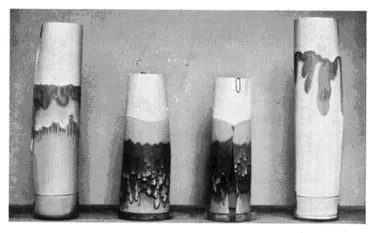
Applying this technique, Kolisko was able to visualize the effects of the planetary influences on matter as it transitioned from the liquid to solid state. She noted the effect was particularly enhanced during the times when the planets were in specific astronomical configurations called aspects.
She observed and identified consistent behaviors of the metals in response to their ruling planets; information passed down from antiquity, i.e. Sun-Gold, Moon-Silver, Mercury-Quicksilver, Venus-Copper, Mars-Iron, Jupiter-Tin and Saturn-Lead. This discovery became known as the Kolisko Effect.
By conducting these experiments daily, over the course of many years, she was able to observe unique patterns that emerge at each of the holiday festivals mentioned above.
Easter Sunday
Easter is perhaps the most interesting of the holidays in that it is a moving holiday — the date of Easter changes from year to year.
Easter is celebrated on the first Sunday after the first full moon on or after the spring equinox, a time that embodies renewal, growth and rebirth.
”Looking at this picture, it seems as if we behold the form of a flower, perhaps the opening bud of a tulip ; but it is not yet at the surface of the soil, it is still beneath, trying to push its way through to the sun.” - L. Kolisko
1% Silver Nitrate
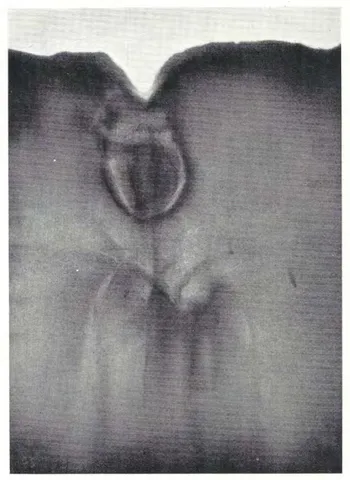
April 17, 1927

April 8, 1928
The similarities between the outcome of these two capillary dynamolysis experiments is unmistakable. Since the date of Easter changes each year, the fact that Kolisko observed a distinct pattern each Easter Sunday is a bit of a curiosity, but I will attempt to explain.
First, we must understand that the spring equinox is an inflection point, marking the re-emergence of energies that were deep within the earth over the winter.
Second, it is necessary to understand the significance of the full moon as explained by Steiner.
”In deed and in truth, with the forces that come from the Moon on days of the full Moon, something colossal is taking place on Earth. These forces spring up and shoot into all the growth of plants.” - Rudolf Steiner
The full moon following the equinox activates the forces in water present in the Earth from the preceding rains. But this cold, yin energy of the Moon needs its polar opposite to bring it into existence — the hot, yang energy of the Sun.
As we learned from the Chaldeans of ancient Babylon and memorialized in the names of the days of the week, the Sun rules Sun-day. I believe it is for this reason that the time of renewal and rebirth is celebrated on the Sunday following the first full moon after the equinox and inscribed in the cosmos at this time.
1928 Progression
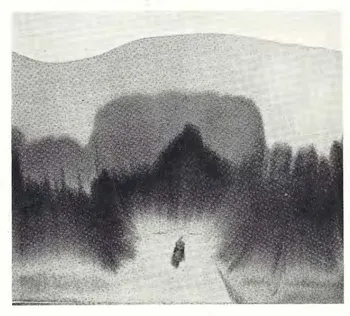
Spring Equinox
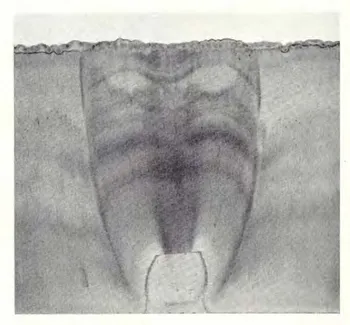

Easter Sunday
The above images were shared by Kolisko in her book Spirit in Matter. They visually tell the story of the formative, etheric forces emerging on the spring equinox, moving toward the surface and then consolidating into a seed form on Easter Sunday.
An important thing to note is the consistency of manifestation which these formative forces take year after year. While not identical each year, they are striking similar. So much so that in 1943, when the Astronomer Royal and the Church authorities had a disagreement about the correct date of Easter, Kolisko was able to identify with certainty that Easter Sunday fell on March 28th of that year rather than April 25th.
St. John’s Festival (Mid-summer)
Below is a beautiful photo captured from Kolisko’s experiment in 1927 on St. John’s Festival. St. John’s Festival celebrates of the birth of John the Baptist and is set on June 24th of each year, just following the summer solstice.
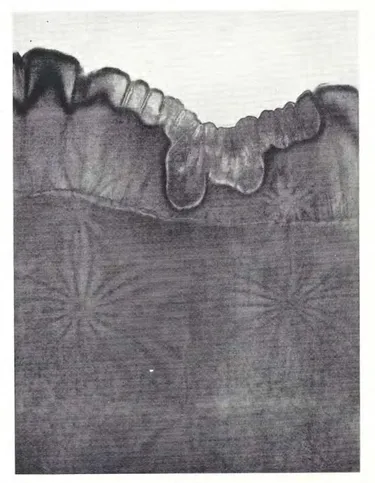
1% Silver Nitrate
Michaelmas Festival (September 29th)
The end of summer is the time when the forces of plant growth decline, fruits are gathered and the leaves fall from the trees. From the photo of Kolisko’s 1947 Michaelmas experiment (below), we can see this falling inward movement of the etheric forces.
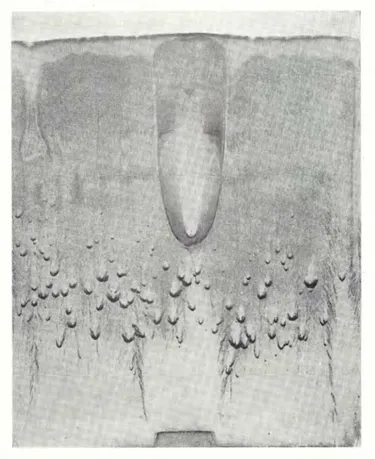
1% Silver Nitrate & 1% Iron Sulfate
Christmas (December 25th)
“At Christmas the mauve and purple colours stream outside and encircle the yellow shades which have withdrawn to the inside. It is a closing in, enveloping movement at Christmas, as opposed to the opening up movement expressed in the forms at Easter.” - L. Kolisko
Below you will notice that the Easter experiment was carried out at noon whereas the Christmas experiment was conducted at midnight. Kolisko notes that the night experiment at Easter is insignificant, and that the day experiment at Christmas is insignificant.
Early in her experimentation, Kolisko noted a significant difference between how the substances react during the daytime compared to during the night. She also explained how certain substances react differently throughout the year. For example, the best results with Copper sulphate and Copper chloride are obtained in the early part of the year (March through May) whereas Silver nitrate is different in Spring, Summer, Autumn and Winter. Overall, she reports that less formative forces appear between December and February.
As a rule, the experiments are at their best between 10 a.m. and 2 p.m., but this reverses after the Winter Solstice and for some time, the best results are obtained between 10 p.m. and 2 a.m., particularly with Gold chloride which she used for the experiments captured below.
Gold Chloride

noon
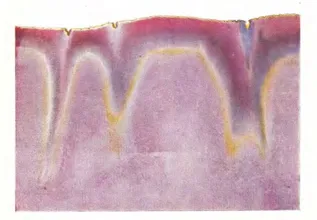
midnight
Kolisko’s book Spirit in Matter was published in 1948, when it wasn’t possible for her to share the many thousands of experiments she conducted. The select experiments she has shared undoubtedly reveal the predictable workings of the etheric forces in matter.
As you celebrate this holiday season, remember that the whole cosmos celebrates with you.